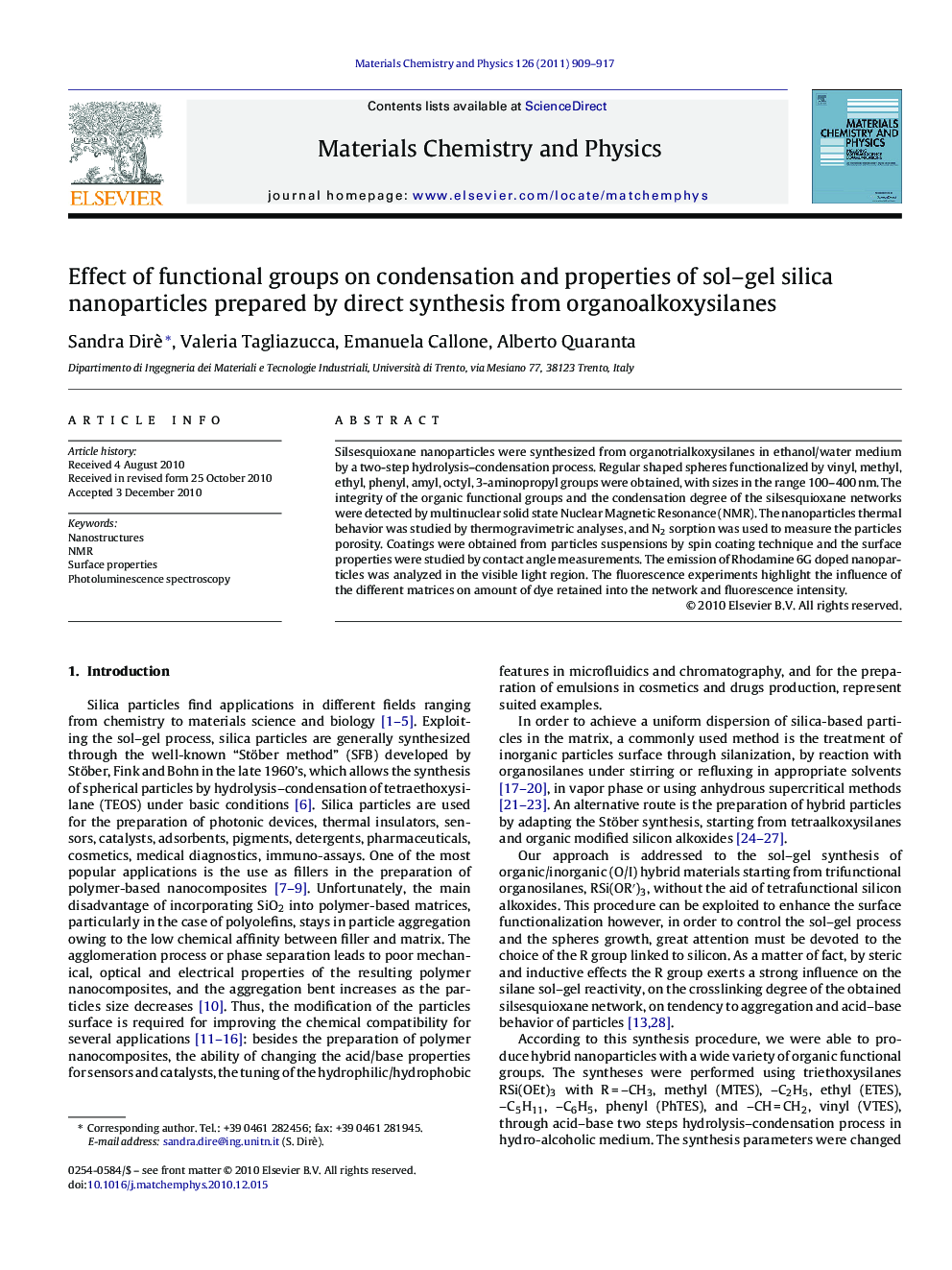| Article ID | Journal | Published Year | Pages | File Type |
|---|---|---|---|---|
| 1524990 | Materials Chemistry and Physics | 2011 | 9 Pages |
Silsesquioxane nanoparticles were synthesized from organotrialkoxysilanes in ethanol/water medium by a two-step hydrolysis–condensation process. Regular shaped spheres functionalized by vinyl, methyl, ethyl, phenyl, amyl, octyl, 3-aminopropyl groups were obtained, with sizes in the range 100–400 nm. The integrity of the organic functional groups and the condensation degree of the silsesquioxane networks were detected by multinuclear solid state Nuclear Magnetic Resonance (NMR). The nanoparticles thermal behavior was studied by thermogravimetric analyses, and N2 sorption was used to measure the particles porosity. Coatings were obtained from particles suspensions by spin coating technique and the surface properties were studied by contact angle measurements. The emission of Rhodamine 6G doped nanoparticles was analyzed in the visible light region. The fluorescence experiments highlight the influence of the different matrices on amount of dye retained into the network and fluorescence intensity.
Research highlights▶ Sol–gel synthesis of silica nanoparticles functionalized with vinyl, methyl, ethyl, phenyl, amyl and octyl groups. ▶ Effect of organic functions on two-step hydrolysis–condensation and morphology of nanoparticles. ▶ Assembling ability and surface properties of coatings from nanoparticles suspension: high contact angles of phenyl and methyl/amyl modified particles. ▶ Influence of silica networks with different organic substituents on Rhodamine 6G absorption and emission.
